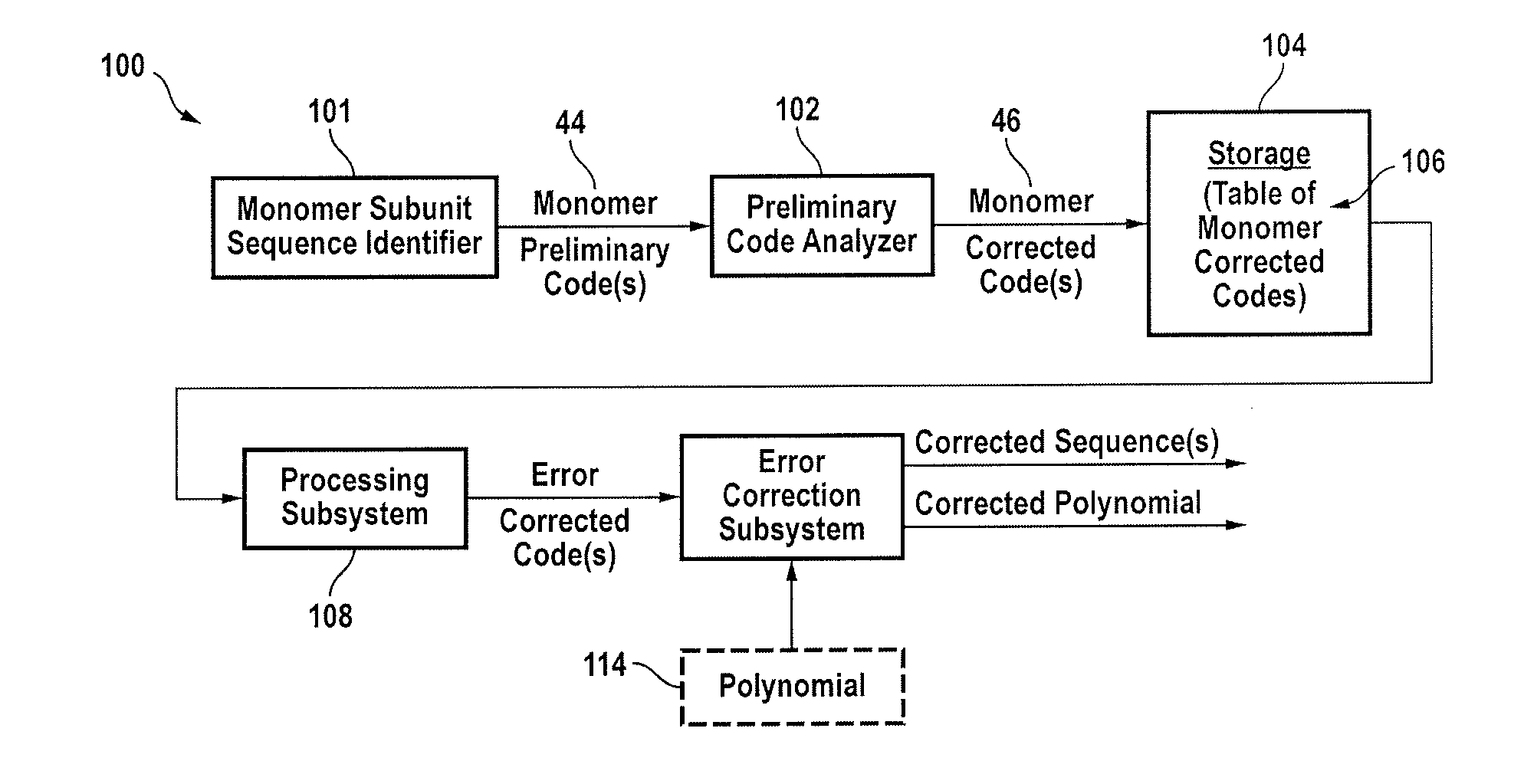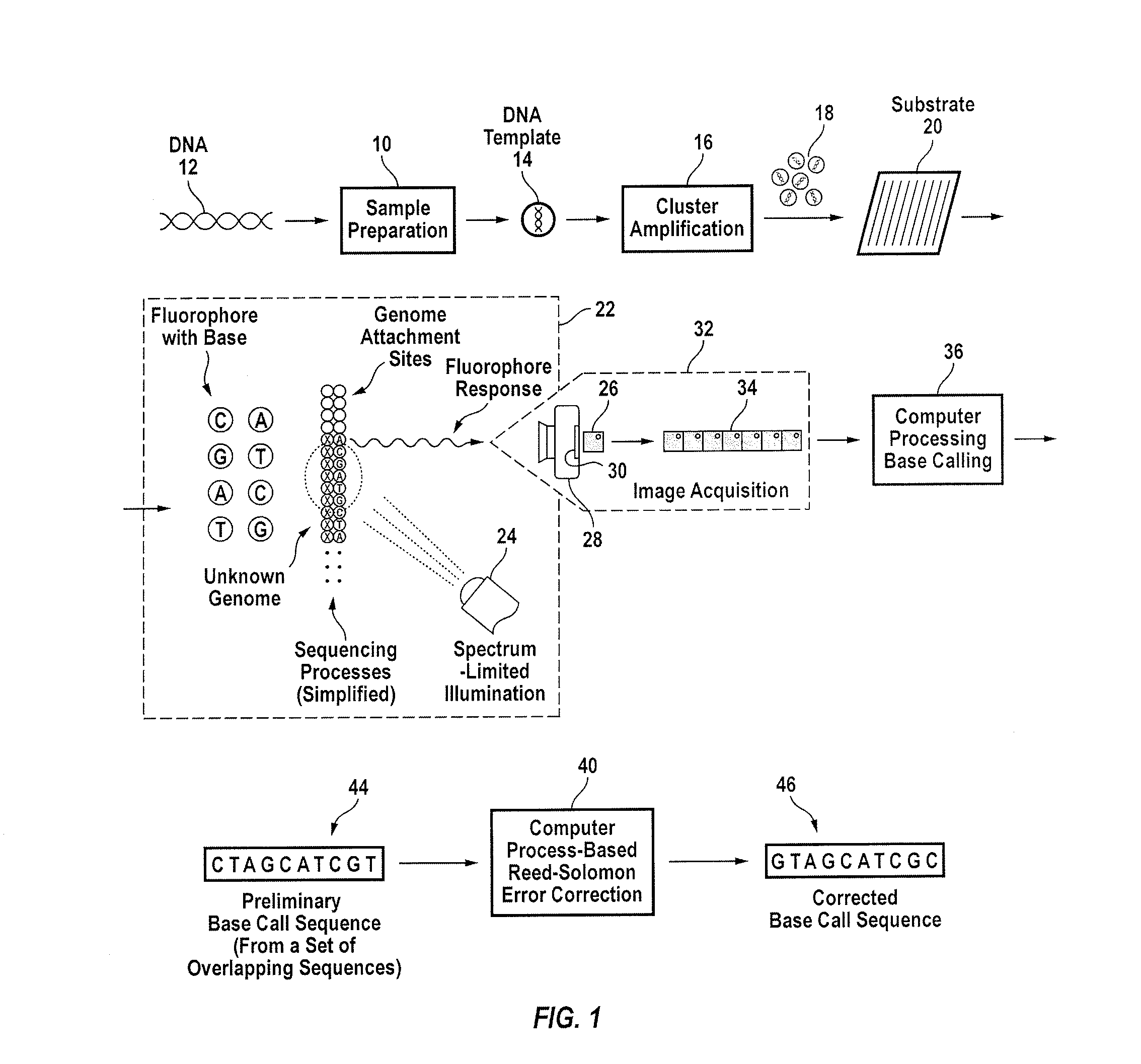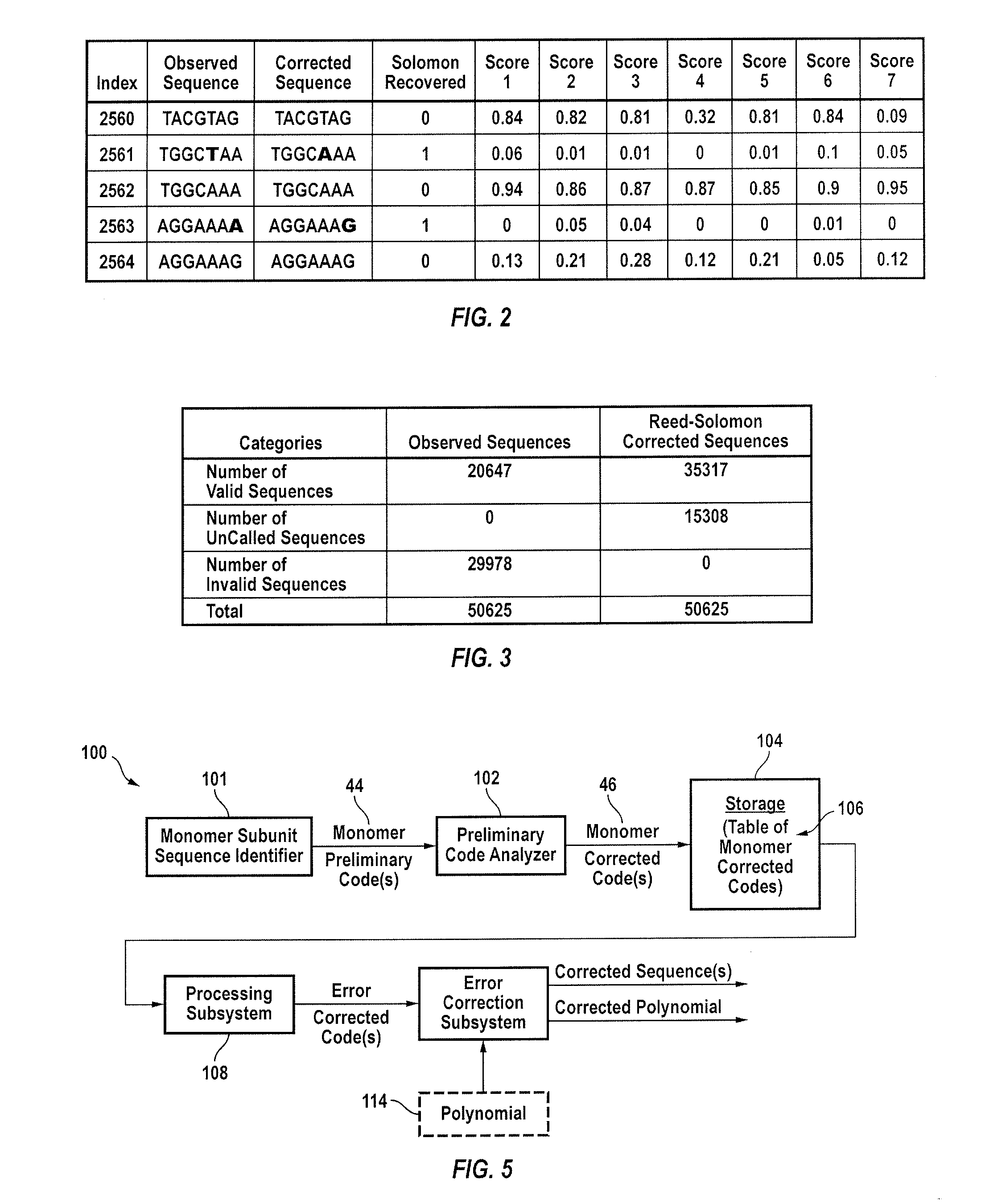Method and apparatus for quantification of DNA sequencing quality and construction of a characterizable model system using reed-solomon codes
a dna sequencing and model system technology, applied in the field of characterizing the accuracy of genome sequence analysis, can solve the problems of placing a significant limit on the overall sequencing efficiency, the inability to achieve single-molecule sequencing, and the limited range of conventional methods of sequencing
- Summary
- Abstract
- Description
- Claims
- Application Information
AI Technical Summary
Benefits of technology
Problems solved by technology
Method used
Image
Examples
Embodiment Construction
[0047]A genome is not random. A genome is a form of an oriented linear heteropolymer that contains overlapping structures and duplicates in monomer subunit sequences, all of which are built out of a limited set of base pairs, typically denominated C, G, A and T. Some genomes are circular. Thus one can say that for those, the circle can be opened and an arbitrary point and thus be treated as a linear genome. These characteristics can be exploited in the process of genome sequencing. Other constructs in this category include amino acids, monomer subunits as a sequence of nucleotides and artificial DNA sequences comprising at least one oligonucleotide. All of these constructs may be processed as hereinafter explained.
[0048]Referring to FIG. 1, the overall method for sequencing target nucleic acids, which has been explained in detail elsewhere, includes sample preparation 10 involving extracting and fragmenting target nucleic acids from a DNA sample 12 to produce fragmented target nucle...
PUM
 Login to View More
Login to View More Abstract
Description
Claims
Application Information
 Login to View More
Login to View More - R&D
- Intellectual Property
- Life Sciences
- Materials
- Tech Scout
- Unparalleled Data Quality
- Higher Quality Content
- 60% Fewer Hallucinations
Browse by: Latest US Patents, China's latest patents, Technical Efficacy Thesaurus, Application Domain, Technology Topic, Popular Technical Reports.
© 2025 PatSnap. All rights reserved.Legal|Privacy policy|Modern Slavery Act Transparency Statement|Sitemap|About US| Contact US: help@patsnap.com



